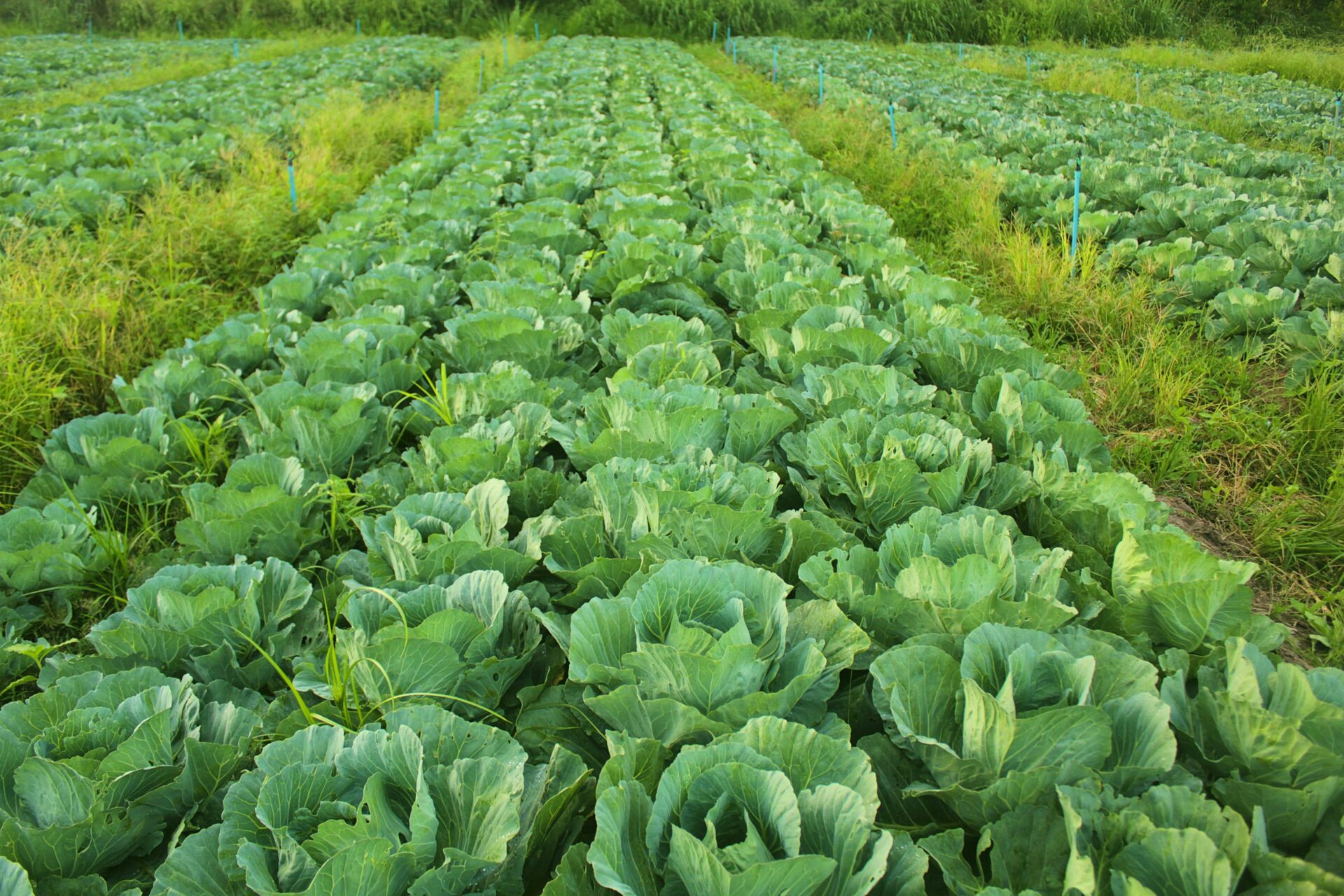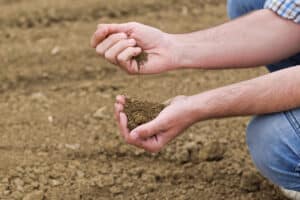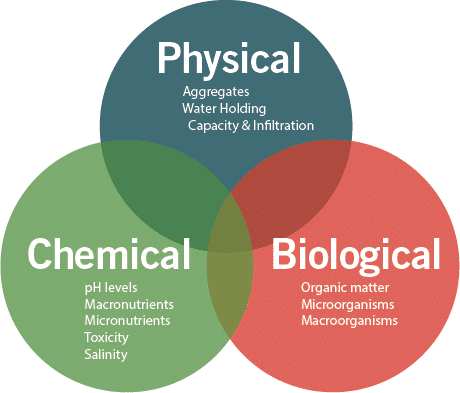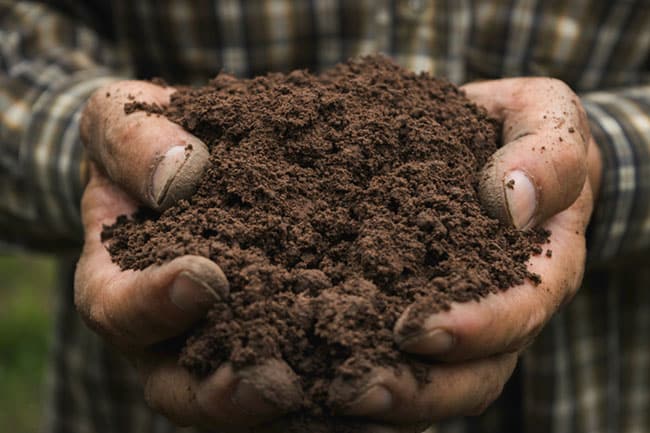Sep 11, 2025



As an ag industry professional, your livelihood depends on the weather, water, and health of your soil. While you can’t control the rain or the fluctuation of spring temperatures, you can influence your soil health if you know what soil health indicators to look for.
Soil management can be split into three overlapping “spheres”. The first two, and most thought of, include physical management (e.g., tillage and deep ripping for compaction) and chemical management (e.g., soil amendments and fertility applications). The last sphere, which is new to most, is biological management. Growers have experienced positive results when deploying strategies to leverage bacteria and fungi as key partners in the field. This approach refers to soil health management. Soil health is the interaction between organisms and their environment in a soil ecosystem. There are key advantages in improving the biological component of the soil, and soil health is shown to impact your soil’s ability to support plant health and improve the yield and quality of your crops.
Yet, almost all farm soil has been impacted by soil compaction, erosion, and nutrient loss. All growers should invest in their soil and support soil’s physical, chemical, and biological health.
Healthy soil impacts your crops by sustaining plant and animal life. There is an entire food web dependent on your soil, from the beneficial microbes we can’t see with the naked eye to the folks around the world who eat your crops.
The healthier the soil, the better the water regulation and nutrient cycling. Healthy soil also provides physical stability and support for your crops to grow stronger roots. Plus, healthy soil filters and buffers potential pollutants.
Not to mention – it has a big impact on your yield potential!
When you think about soil health, think of it in three buckets: chemical, physical, and biological. Sometimes only one component is affected and needs support.
Other times, something damaging to your soil (like tillage) can impact all three buckets at the same time.

pH levels indicate the alkalinity or acidity of your soil. Improper soil pH can result in key nutrients being less available for your crops. The pH level can also impact your beneficial microbial communities.
Macronutrients, such as N, P, and K, are vital to plant growth. If these macronutrients are unavailable in usable quantities, your crops will likely suffer.
Growers often add organic matter or fertilizers to help increase macronutrient levels in their fields.
While necessary only in small quantities compared to macronutrients, micronutrients are just as essential for crop growth.
Soil salinity is the amount of dissolved salt in the soil. Salinity levels can be a cause for concern when high levels of soluble salts accumulate at the root zone; this can cause inhibition of nutrient and water uptake.
When talking about physical soil health indicators, examine the structure and texture of your soil to get a better understanding of your soil’s health.
Aggregates are the arrangement of soil particles in different sizes and shapes. These clumps are held together by root exudates, “nets” from soil fungi, “glues” from bacteria, and inherent soil properties. The space between soil particles is known as “pore space”.
Great aggregation means there is a lack of compaction. When soil is compacted, there is less pore space for water and oxygen to infiltrate the soil, which impacts drainage, plant growth, and the microbes in the soil.
Active microbes help bind soil together – bacteria by secreting a glue-like substance called extracellular polysaccharides, and fungi by weaving soil particles together with their net-like extensions called hyphae. As the microbes bind more soil together, they form aggregates, which improves soil structure.
Water holding capacity and infiltration is how well your water can penetrate the soil. Infiltration is largely dependent on soil texture. As mentioned above, better aggregates lead to better infiltration and water holding capacity. Soil organic matter can also impact infiltration.
Biological soil health refers to the living parts of your soil or the biological integrity of your field (e.g., microbial populations and diversity) and a focus on supporting plant growth.
There are multiple practices to improve your soil biology and soil structure.
Component | Practice |
Feed Existing Biology | Provides the soil microbiome a food source |
Add Biology | Provide certain species of bacteria and fungi to soil |
Utilize Carbon Products and Biostimulants | Multiple Modes of Actions |
Mulches and Compost | Provides a bulk carbon and nutrient source to the soil |
Cover Cropping | Keeps living roots in the soil and protects soil from erosion |
Reduce Tillage | Helps keep soil structure and microbial communities intact |
Table 1. Practices to help improve soil biology and soil structure.
Organic matter influences your water holding capacity and contains nutrients that can be broken down for microbes to consume and make accessible to crops. To improve the amount of organic matter in your soil, reduce tillage, rotate crops, and use cover crops.
Your microbiome consists of both good and bad soil microbes. In most farm soils, more than half of the beneficial microbes are dormant or inactive due to starvation.
When beneficial microbes are fed a carbon microbial food source, they’re able to go to work supporting your soil and crops. Here are just a few ways beneficial microbes can impact your soil when fed a balanced meal:
Macroorganisms in a soil ecosystem include fungi, arthropods, spiders, worms, beetles, and more.
Earthworms are a sign of good soil health. Worms decompose organic material and increase the porosity of soil through their tunnels. This allows water to move through the channels and gives roots additional access. Their casting contains nitrogen, phosphorus, and potassium, which also increases nutrient cycling.
A note on weeds: Often, weeds are the first plants to grow in unhealthy, compacted, or newly formed soil. They thrive in conditions where something, e.g., organic matter or healthy aggregates, is missing.
Yet, weed soil cover is better than no soil cover until you’re able to get your crops or cover crops into the ground. If certain areas of your farm have a higher concentration of weeds, it may be a sign your soil is suffering and needs attention.
Growers take note of specific soil health indicators to gauge changes over time. These indicators need to easily measure a soil function and encompass the biological, chemical, and physical properties of soil. They also need to be accessible to many growers and fields, regardless of conditions and variations in climate and management.
This makes it easy for all growers to track measurable changes over time, no matter where your farm is located.

Growers can use their senses in their field to get a basic understanding of their soil’s health. By using your sight, touch, and smell, you can determine if your soil is healthy, or if it needs help.
Is there anything growing in your soil? Bare soil is a sign that a soil’s ecosystem processes are not working as they should and need help. Without a functioning soil ecosystem, you can’t have healthy soil.
Ideally, your soil should be covered by green, non-invasive, or detrimental weed species. Yet, dormant, dead plants or weeds are often better for your soil than no plants at all.
If you have bare spots in your fields, you can cover them with plant residue, manure, or wood chips to encourage plant growth and improve soil health.
Do you know what color your soil is? Brown, gray, or almost black? The color of the soil may indicate the amount and state of organic matter your soil contains. It can also be an indicator of iron oxide, age, and other physical processes.
The darker the soil, usually the higher concentration of organic matter. Growers should expect to see the layers beneath the top layer lighten the further down they go.
There is also a standardized soil color system, created by Albert H. Munsell, which includes three components: hue, value, and chroma (color intensity).
Occasionally, a darker soil color can be due to the presence of reduced iron or manganese in prairie soils.
Have you ever taken the time to touch your soil structure? If so, you’ve likely noticed the aggregates or dirt particles bonded together more strongly than the adjacent particles.
Your soil’s ability to hold particles together and form soil structure is known as aggregate stability. Usually, the aggregate stability increases as the percentage of soil organic matter increases.
The soil texture can also impact your aggregates, as the amount of sand, silt, and clay influences binding. Higher clay content usually means higher organic matter and soil aggregates are easily achieved. For sandy soils, there are lower organic matter concentrations and fewer aggregates.
If you have no aggregates clumping together, you may have a soil texture and structure problem.
The presence of earthworms, dung beetles, spiders, ants, and other soil life at the top six inches is a good sign. Remember, you want an active soil ecosystem. A healthy food web is essential for healthy soil!
If you dig into your soil 2 to 3-feet deep, you will likely see horizontal layers, some of which are harder to get through than others. Healthy soils have excess roots and few, if any, compact layers.
If you notice excess roots, pull one from the soil and shake the dirt from the root. If the soil falls into large, stable chunks that can be broken apart in your fingers, then those are indicators of healthy macroaggregates.
Tough layers are called layers of resistance and occur from continuous compaction or previous tillage. These layers can limit root penetration and water infiltration.
You can also look for a “J” shape on your taproot crops. If the “J” is present, this means the roots have grown down to the resistance layer, and then started growing back up because it can’t penetrate the last layer.
In extreme cases, water can’t penetrate the soil, which limits water holding capacity, increases drought and abiotic stress on your crops, and can increase salinity over time.
The longer it takes to dig a hole, the more likely your soil is trying to tell you it needs help.
If your field has wind erosion, you’ll notice soil deposits behind plants and rocks. Water erosion will create little dams across the paths water travels downhill. You may also have a water erosion problem if you notice ponding at the surface of your fields.
An earthy smell indicates biological activity and a healthy, active soil ecosystem. The smell is an organic compound called geosmin, and indicates your soil is cycling organic matter.
If your soil smells like rotten eggs, it can be a sign it’s lacking oxygen, and can indicate a drainage issue.
These five regenerative agriculture practices can help improve your soil health and quality.
Diversify your crops: Diverse crops help create a healthy food web. Monocropping can lead to nutrient depletion and unhealthy soils.
Add cover crops: A great way to diversify what’s in your field is to add cover crops. This can help increase your soil organic matter, feed beneficial microbes, and absorb and recycle soil nutrients. Cover crops also improve pore space, increase water infiltration, and insulate the soil from extreme weather temperatures.
Minimize tillage: While no-till may not be an option for all growers, implementing low-till or no-till practices, plus minimizing the heavy machinery passes across your fields can help save your soil from compaction.
Add organic matter: Organic matter impacts the physical, chemical, and biological components of soil health. Regularly adding organic matter supports the entire soil ecosystem.
Feed hungry soil microbes: Roughly 75% of beneficial microbes in farm soils are dormant or starving due to inadequate food sources. You can wake them up with a carbon microbial food source (like PhycoTerra). Once awake, your soil microbes will work to improve your soil structure, water holding capacity, and crop yield.
Look for soil health indicators with your senses first. Then consider investing in a soil test to get more information on the support your soil needs. Once you identify where your soil is lacking, you can begin to make improvements.
If you’ve never fed your microbes, they likely are ready for a meal! Start the conversation with our professionals to jumpstart supporting your beneficial microbes and soil health.